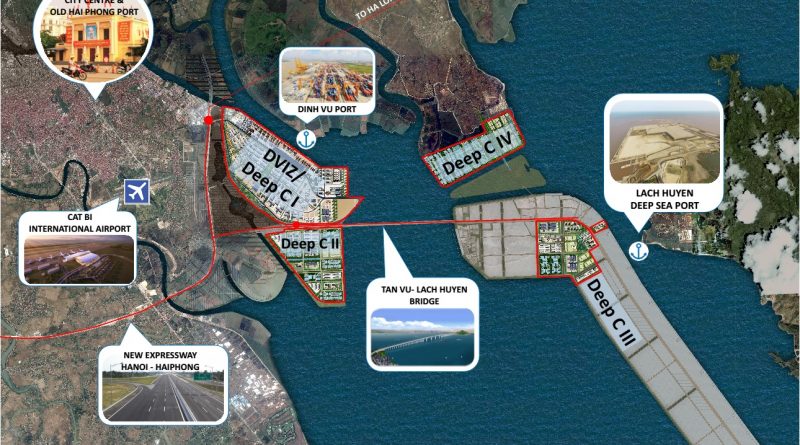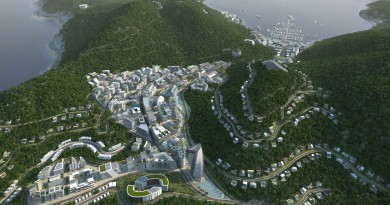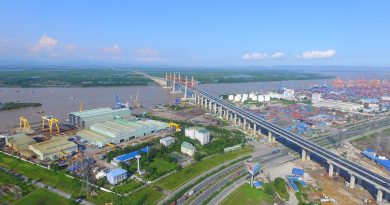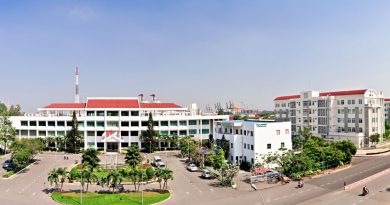DEEP C leads port JV for Quang Ninh
Russia’s private leader in port development and operation, The Seaport of Azov, and the DEEP C consortium headed by leading Belgian port, industrial zone, and green energy group Rent-A-Port have agreed to develop a state-of-the-art ecological industrial zone and port complex in the northern province of Quang Ninh.
September 8 marked a milestone for co-operation ties between Quang Ninh authorities, Tien Phong Industrial Zone JSC – in which DEEP C consortium is a major shareholder – and The Seaport of Azov. The parties agreed to seek the central government’s approval to transform an area of 100 hectares in Quang Ninh’s South Tien Phong region into a hub for industrial manufacturing and port operations along the Chanh River.The establishment of a Vietnamese-Russian industrial manufacturing hub in northern Vietnam is expected to speed along a new wave of Russian investments in Vietnam as a result of recent high-level governmental commitments to boost the two countries’ investment and trade in the near future.
The signing of the memorandum of understanding (MoU) was made on the sidelines of the 20th Session of the Vietnam-Russia Intergovernmental Commission on Trading-Commerce and Science-Technology Cooperation in Ho Chi Minh City, which saw the participation of approximately 150 Vietnamese and Russian businesses.
According to the MoU, the development of the Vietnam-Russia Industrial Complex within the $128 million Tien Phong Industrial Zone is expected to kick off swiftly if Vietnamese authorities give their go-ahead to the project soon.
 The complex will join the DEEP C infrastructure, supporting an emerging industrial hub for northern Vietnam
The complex will join the DEEP C infrastructure, supporting an emerging industrial hub for northern Vietnam
The Seaport of Azov started investment in Quang Ninh in 2016. The intention of the partners is to equip the Vietnam-Russia Industrial Complex with a liquid jetty and a general cargo port, as a continuation of their year-plus of co-operation.
The complex will be developed in a location between the international deepwater seaport of Lach Huyen in the northern port city of Haiphong and the shallow Chanh River in Quang Ninh. This would enable all manufacturers based in the complex to transport their products via an inland waterway in order for them to be able to reduce the number of trucks on the road.
“This is a great opportunity to present The Seaport of Azov’s commitment to invest in Vietnam. Our ultimate aim for this strategic co-operation framework is to attract Russian companies to invest and expand their business in Vietnam in general and in northern regions like Quang Ninh in particular,” said Andrian Sinebok, chairman of the Board of The Seaport of Azov, at the signing ceremony.
DEEP C and The Seaport of Azov’s pipelined industrial zone and port complex coincides with investment from Russia to Vietnam hitting a downturn. Statistics show that in the first eight months of this year, Russian businesses registered to invest roughly $1.026 billion in 114 valid projects in Vietnam.
The deal is also a positive result of the partnership agreement between Vietnam and Russia signed at the end of June. Vietnamese President Tran Dai Quang and Russian President Vladimir Putin agreed on investing more than $10 billion in both countries in the coming years.
According to Marc Stordiau, Rent-A-Port’s CEO, the signing of the MoU represents the strong business relationship of Rent-A-Port and The Seaport of Azov and a 20-year friendship between the global businesses.
For Vietnam, this is the logical continuation of the previous co-operation between DEEP C consortium and The Seaport of Azov in Euro Jetty JSC. The first investment of Euro Jetty JSC was the existing liquid jetty – one of the biggest of its kind in northern Vietnam – in Haiphong’s Dinh Vu/DEEP C Industrial Zone, which has attracted more than 70 projects invested by multinational companies from Japan, Germany, the US, Vietnam, Singapore, and South Korea, with a total investment amount of more than $3 billion.
Stordiau told VIR that The Seaport of Azov is operating a port in Russia in a location similar to Tien Phong, and thus this latest business venture of the Russian partner with its port experience and the DEEP C consortium will likely be successful. “We will continue working together with the Vietnamese authorities so as to realise a strategic plan to develop the maritime access to Tien Phong Port of Quang Ninh,” Stordiau said.
The Seaport of Azov is located on an intermodal corridor intended for movement of cargo from north to south, and also handles freight from and to the Balkan-Danube and Mediterranean regions. It is the main gate connecting the Mediterranean Sea with the internal waterway system of Russia and the Caspian Sea. It allows the delivery of cargo to the centre of Russia, to the Ural Mountains, and Central Asia.
Rent-A-Port is the port-related investment and management arm of the Belgian holding company Ackermans & van Haaren, which was founded in 1885 and is one of the largest listed holding companies in Belgium, with assets worth €2.7 billion ($3.2 billion).
Rent-A-Port operates as an engineering and investment company that analyses, designs, constructs, develops, and manages port, logistic, and marine infrastructure, as well as industrial zones worldwide. Some examples are the port of Antwerp (Belgium), the second-busiest port in Europe; the port of Kampen (Netherlands); the port of Duqm (Oman); and the port of Messaieed (Qatar).
In Vietnam, Rent-A-Port’s investments are in Dinh Vu Industrial Zone JSC with three DEEP C Industrial Zones covering 3,000ha in Haiphong, in Tien Phong Industrial Zone JSC with two DEEP C Industrial Zones in Quang Ninh, in green energy and water treatment projects in Haiphong and Halong Bay, and in co-operation with the Vietnamese government in wind- and solar-driven micro-desalination for agricultural production in the Mekong Delta region.
“Rent-A-Port has already invested an amount in excess of $200 million and has now also committed to invest an additional $250 million in various industrial zone and port complexes in Vietnam in the next 10 years,” Stordiau told VIR.
Source: VIR







